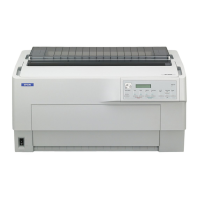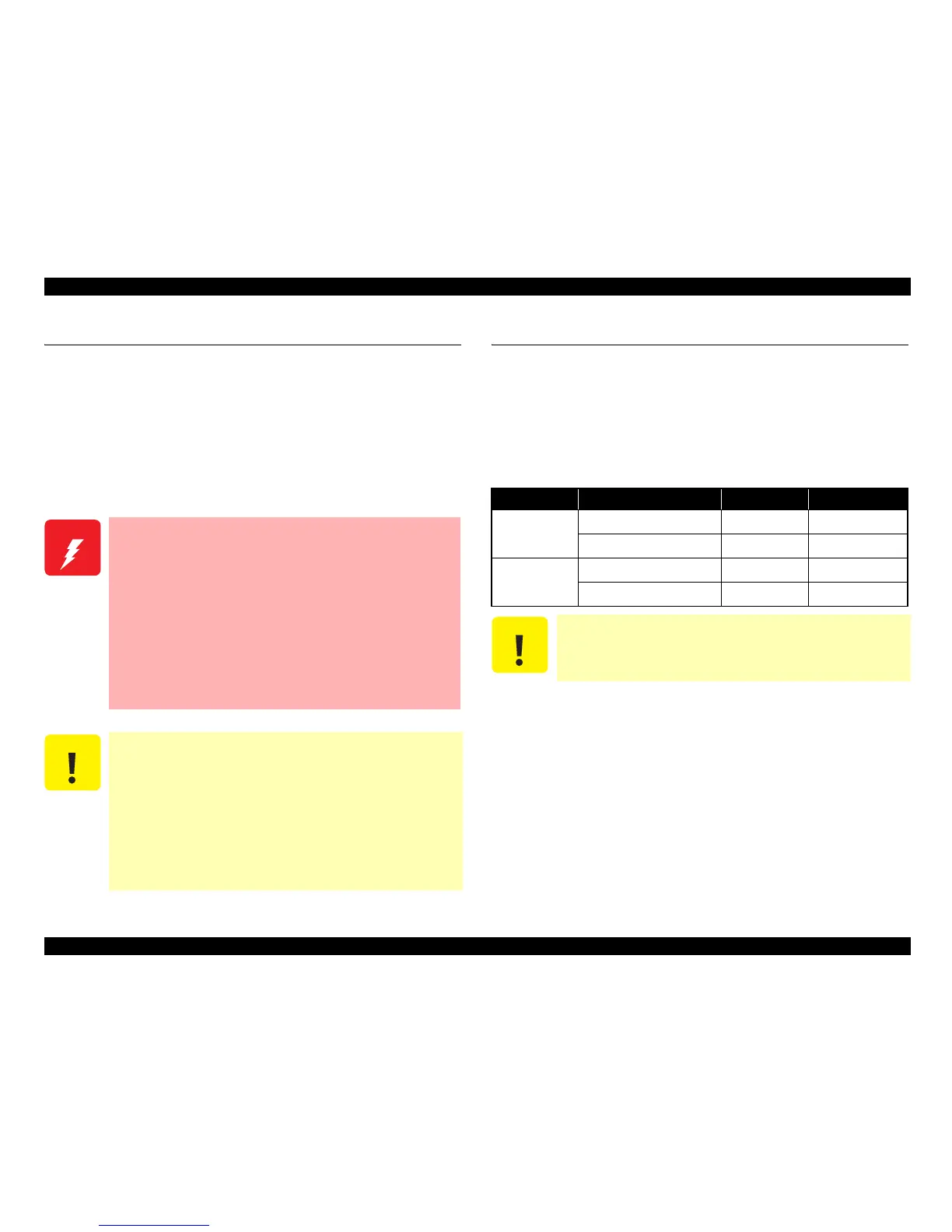Epson DFX-9000 Revision B
Maintenance Overview 258
6.1 Overview
6.1.1 Preventive maintenance
Preventive maintenance is important to keep the printer in the best
working condition and to help prevent premature failure.
Keep the printer as clean as possible. If necessary, use denatured alcohol
to clean the exterior case. Use a vacuum cleaner to remove any dust and
paper debris accumulated in the printer.
6.2 Lubrication
6.2.1 Lubricants
The use of appropriate lubricants is critical to printer performance,
especially in low temperatures. Epson has extensively tested and
analyzed various types of oil and grease, and specifies the lubricants in
the table below.
W A R N I N G
Before disassembling, assembling or adjusting the
printer, disconnect the power supply cable from the AC
power socket, and wait at least 5 minutes for capacitors
to drain. Failure to do so might cause personal injury.
Be careful with the Printhead when you handle it. It
may be very hot immediately after printing.
Do not touch the heat sink attached to the switching
FETs (Q101, 102, 103, 301, 302, 303) on the power
supply board immediately after power off. It may be
very hot.
C A U T I O N
Do not use paint thinner, trichloroethylene, or ketone-
based solvents on the plastic components of the printer.
Never use oil or grease other than those specified in this
manual; use of other lubricants can damage the printer
or its components.
When using compressed air products; such as air duster,
for cleaning during repair and maintenance, the use of
such products containing flammable gas is prohibited.
Table 6-1. Lubrication
Type Name Supplier Part No.
Oil O-31 Epson 1080618
G-41 Epson 1017323
Grease O-6 Epson T.B.D.
(FLOIL T-7) Epson T.B.D.
C A U T I O N
Lubricants must be applied during the reassembly process.

